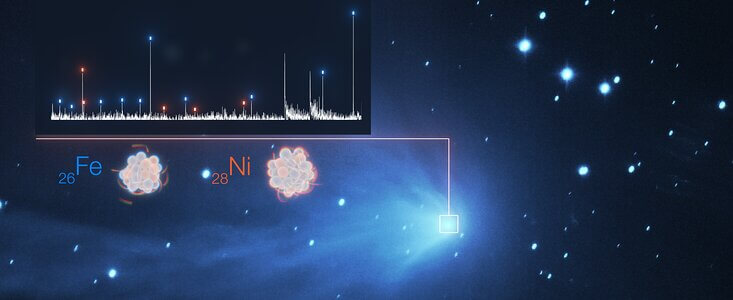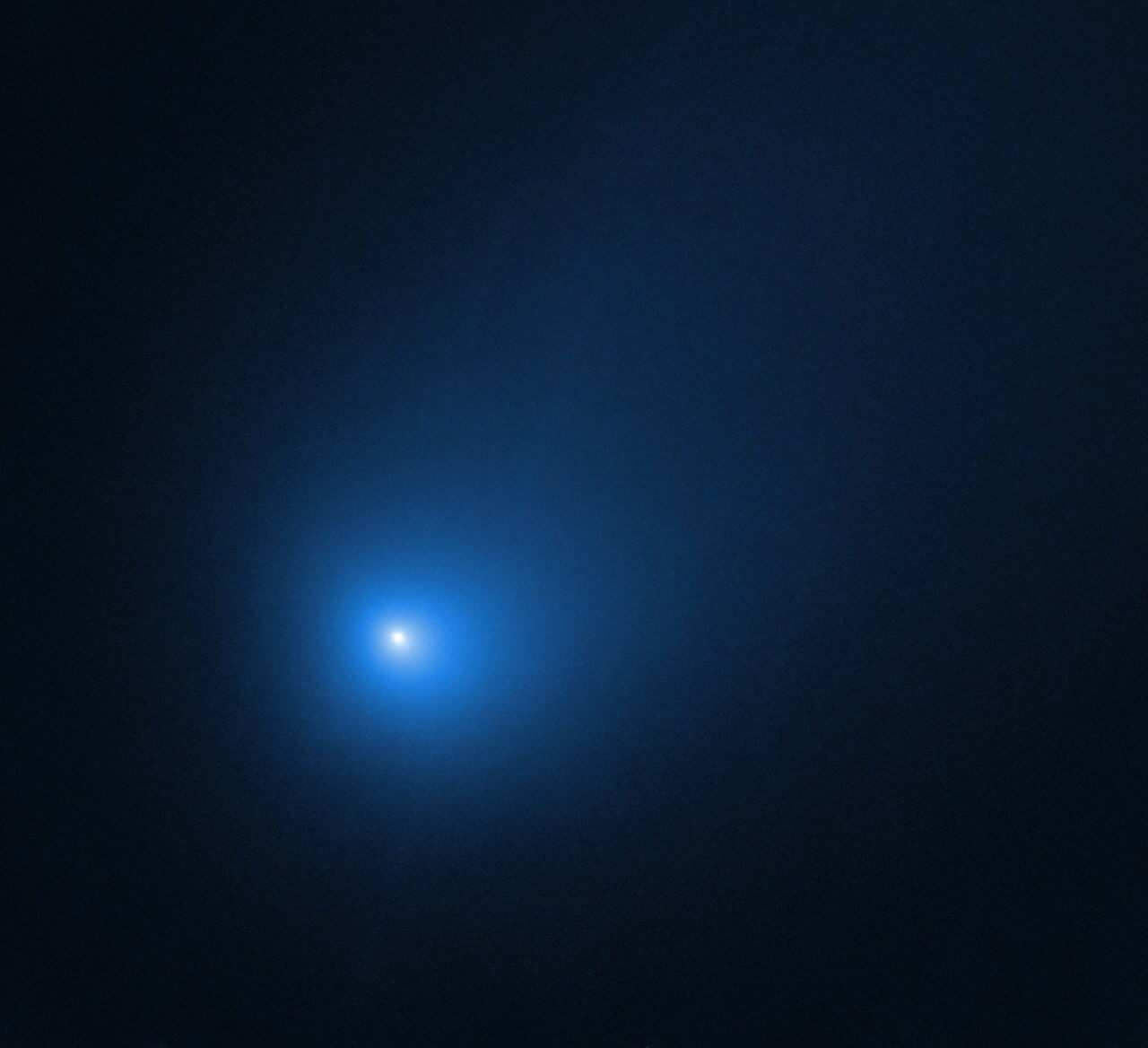A new study conducted by a Belgian research team found that the metals iron and nickel are found in the atmospheres of comets traveling in our solar system, even those far from the sun. The findings were obtained with the help of data collected from the very large telescope which is located on the Cerro Paranal mountain, at an altitude of 2,635 meters in the Atacama Desert in northern Chile

[Translation by Dr. Moshe Nachmani]
This is the first time that heavy metals, which are usually found in hot environments, have been found in the cold environment of distant comets. "It was a big surprise to find iron and nickel atoms in the atmospheres of all the comets we have observed in the last two decades, about twenty of them, and even in those far from the Sun in an extremely cold space environment," said Jean Manfroid of the University of Liege in Belgium, who led the new study on comets in the Solar System which has long been published in the prestigious scientific journal Nature.
Astronomers already know that heavy metals are indeed found in the dust and rocky interior of comets. However, given the fact that solid-state metals do not usually transition to a gaseous state at low temperatures, they did not expect to find them in the environments of cold comets moving away from the hot sun. Nickel and iron vapors have now been detected even in comets observed more than 480 million kilometers from the Sun, three times the distance from the Earth to the Sun. The Belgian research team found iron and nickel in the atmospheres of comets in almost identical amounts. The material in our solar system, for example that found in the sun and in meteorites, usually contains ten times more iron than nickel. These new findings have implications for astronomers' understanding of our primordial solar system. "Comets were formed about 4.6 billion years ago, in the initial period of our solar system, and they have hardly changed since then. In this sense, they are like fossils for the astronomers", says one of the authors of the article. Although the Belgian research team has been studying these fossil-like objects with the Very Large Telescope for twenty years, they have not detected the presence of nickel and iron until now. "This discovery has been overlooked for many years," said the lead researcher.
The research team used the data collected from the telescope as part of a method known as spectroscopy, with the help of which the astronomers manage to understand the chemical composition of cosmic objects: each and every element has a unique spectroscopic "fingerprint" - a collection of absorption lines - in the spectrum of the light reflected from that object. Using this method, the Belgian team was able to identify weak and unidentified spectral absorptions within the data obtained from the telescope, and upon more careful analysis they realized that these absorption lines correspond to neutral atoms of the elements iron and nickel. It is very difficult to locate heavy elements in light of the fact that these are found in extremely small quantities: the team estimates that in every one kilogram of water in the comet's atmosphere there is only one gram of iron, and a similar amount of nickel. "Usually there is an amount of iron that is ten times greater than that of nickel, but in these comets it was found that the amounts of the two elements are similar. We came to the conclusion that they may have been formed from a special type of common source material that was present on the surface of the comet's nuclei, a material that changed to a gaseous state at a relatively low temperature, with the emission of iron and nickel atoms in identical quantitative ratios," explained the lead researcher. Although the team is still not sure what type of source material this is, technological advances in the field of astronomy will allow them in the future to verify the source of the material for these two elements found in comets. The Belgian team hopes that the findings of their research will pave the way for future research - "Researchers will now look for these absorption lines in the previous data collected by them and other telescopes," said the lead researcher. "We believe that our research will also accelerate new research on this topic."
Another remarkable study published long ago in the prestigious journalNature shows that heavy metals are also found in the atmosphere of the interstellar comet it symbolizes 2I / Borisov. A research team from Poland spotted this object, the first extraterrestrial comet to reach our solar system, using an X-ray spectrograph at the same telescope site in Chile about a year and a half ago. They discovered that the cold atmosphere of this comet contains nickel in its gaseous state. "At first it was hard for us to believe that atomic nickel could indeed be found in this comet moving so far from our sun. We needed more tests and experiments before we convinced ourselves that this is indeed the case," said one of the researchers from the Jagiellonian University in Poland. The finding is surprising in light of the fact that prior to the publication of these two studies, gases of heavy metal atoms were observed only in hot environments, such as in the extremely hot atmospheres of extrasolar planets (exoplanets) or in the vapors of comets moving close to the Sun. Comet 2I/Borisov was observed when it was 300 million kilometers from the Sun, twice the distance of Earth from the Sun.
The study of interstellar bodies in detail is an essential basis in science in view of the fact that they treasure valuable information about the origin of extraterrestrial star systems. "So suddenly we realize that gaseous nickel can indeed be found in the atmospheres of comets in distant corners of our galaxy," says one of the researchers.

For a message on the ESO website
More of the topic in Hayadan:

2 תגובות
In the original article it is written that in every 100 kg of steam there is one gram of iron and one gram of nickel. That is 10PPM. Please buy and download this note.
The comets are indeed floating in the empty and cold space today, but they were created (apparently) from ultra-hot phenomena, super-nova explosions, just as the clouds of cosmic dust from which the star systems and the planets surrounding them were formed. Still, the concentration of iron in the comet is relatively small for an Earth-like planet, while the percentage of frozen water (ice) in its nucleus and light gas atoms in its tail is very large (thanks to the cold that greatly reduces the thermal dispersion as long as the comet is far from the sun), but there is no reason for a more substantial difference than the differences caused Random at the time of the explosion and scattering the fragments of the exploded star.